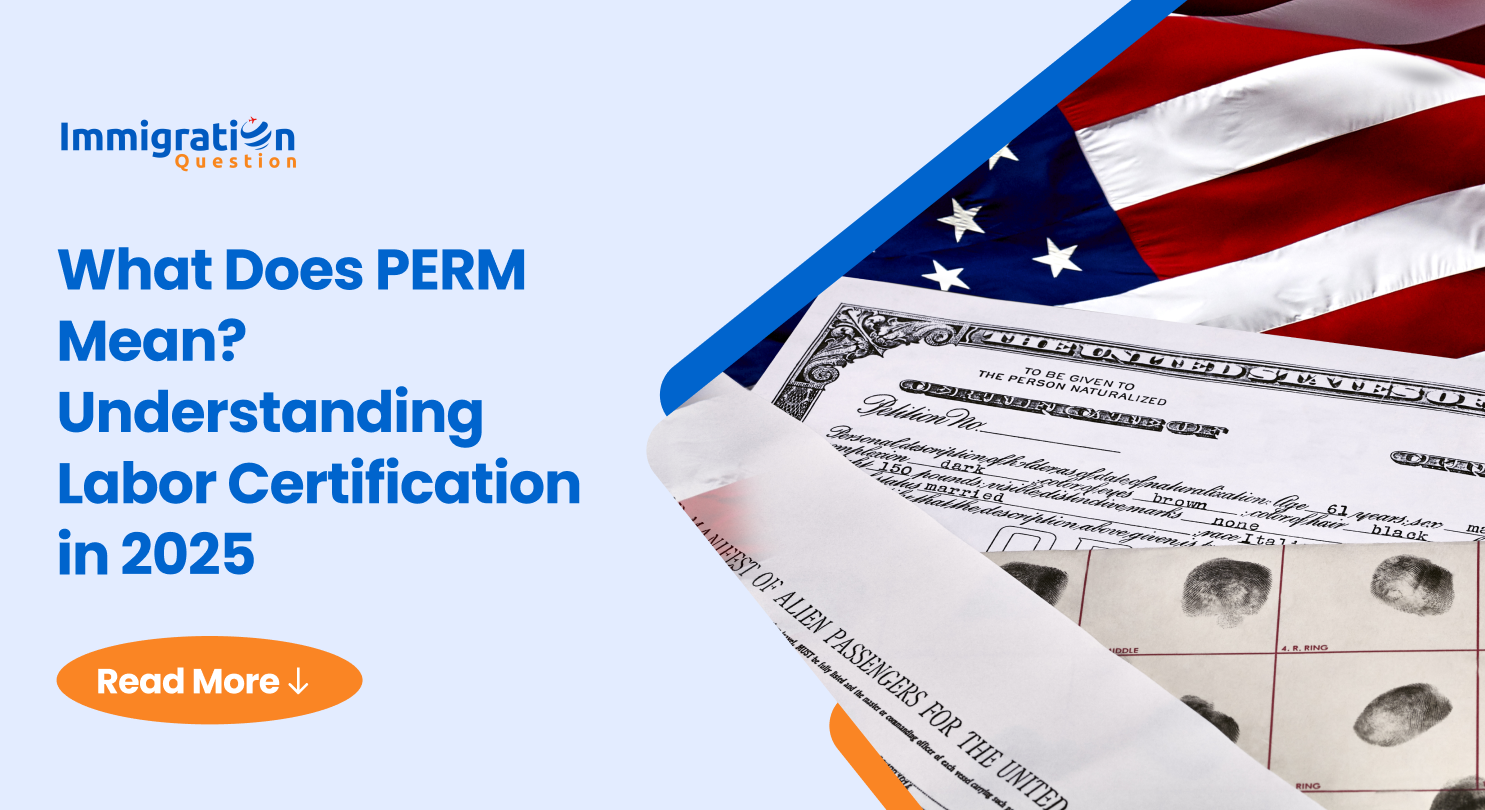What does PERM mean and why is it so crucial for employment-based immigration? For thousands of foreign professionals working in the United States, this acronym represents the gateway to permanent residency.
PERM labor certification is the mandatory first step for most employment-based green cards. Yet, it’s one of the most complex and time-consuming processes in the U.S. immigration system.
In 2025, understanding the PERM certification process is more important than ever as processing times lengthen and requirements evolve. This guide breaks down everything you need to know about this immigration process that can make or break your American dream.
What are the Requirements for PERM Labor Certification?
PERM stands for Program Electronic Review Management, an online system introduced in 2005 by the Department of Labor (DOL) for processing permanent labor certification applications.
The primary purpose of PERM is to protect U.S. workers by ensuring that hiring foreign talent won’t negatively impact job opportunities or wages for American citizens and residents.
Through the PERM certification process, employers must prove they’ve made genuine efforts to recruit qualified U.S. workers for the position but were unable to find anyone who meets the minimum requirements. Only then can they move forward with sponsoring a foreign worker for permanent residency.
Who Needs PERM Certification?
Not every immigration pathway requires PERM labor certification. Here’s who needs it:
- Employers seeking to sponsor foreign workers for most EB-2 (advanced degree or exceptional ability) and EB-3 (skilled workers, professionals, and other workers) green cards
- Foreign workers pursuing permanent employment-based residency through these categories
Some categories are exempt from the PERM requirement, including EB-1 (extraordinary ability, outstanding professors/researchers, multinational executives), EB-2 National Interest Waivers, and Schedule A occupations like nurses and physical therapists.
The PERM Process Step-by-Step
The PERM labor certification process involves several steps that typically span 15-24 months or more. In 2025, here’s what it entails:
- Establishing Job Requirements
First, the employer must clearly define the position, including job title, duties, minimum education and experience requirements, and work location.
- Prevailing Wage Determination
The employer must request a prevailing wage determination from the DOL, which establishes the minimum salary that must be offered. In 2025, this step typically takes 5-8 months due to processing backlogs.
- Recruitment Process
This critical phase tests the U.S. labor market and requires employers to:
- Place job advertisements in newspapers of general circulation
- Post the position with the state workforce agency
- Post a notice at the worksite
- Conduct additional recruitment efforts depending on the position
The recruitment phase generally takes 2-3 months and must be well-documented.
- Filing ETA Form 9089
After completing recruitment, employers submit the PERM certification application (Form ETA 9089) to the DOL. This form details the foreign worker’s job requirements, recruitment efforts, and qualifications.
- DOL Processing
In 2025, standard PERM labor certification processing takes 15-17 months. Applications may be:
- Approved, allowing the employer to move forward with the green card process
- Denied, requiring a fresh start or appeal
- Audited, requiring additional documentation and extending the timeline by 6+ months
PERM Labor Certification for Different Visa Categories
What are the requirements for PERM labor certification across different employment-based categories? Let’s compare:
EB-2 Visa PERM
The EB-2 visa PERM process applies to positions requiring:
- An advanced degree (master’s or higher) or equivalent (bachelor’s degree plus 5 years of progressive experience)
- Exceptional ability in sciences, arts, or business
The job requirements include these advanced qualifications, and the foreign worker must possess them.
EB-3 Visa PERM
The EB-3 visa PERM process covers three subcategories:
- Skilled workers (requiring at least 2 years of training or experience)
- Professionals (requiring at least a bachelor’s degree)
- Other workers (requiring less than 2 years of training)
The main difference between EB-2 and EB-3 is the qualification requirements and visa availability. EB-2 typically requires higher qualifications. However, visa number wait times for EB-2 and EB-3 categories can fluctuate. They may be similar or even favor EB-3 for certain countries like India and China, depending on current visa bulletin backlogs.
How Immigration Question Attorneys Can Help
Navigating the PERM labor certification process without professional guidance can be overwhelming and risky. A single mistake can lead to delays, audits, or denials – costing employers time and money while leaving foreign workers uncertain.
At Immigration Question, PERM labor certification attorneys provide crucial support through this challenging process. These professionals help employers:
- Properly define job requirements
- Navigate the complex recruitment process
- Prepare and file accurate documentation
- Respond effectively to audits or requests for evidence
Professional representation can make the difference between a smooth process and a frustrating delay. If you’re considering sponsoring an employee or seeking permanent residency through employment, visit the IMQ website today and speak with an Immigration Question Attorney.
FAQs
How long does the PERM process usually take in 2025?
The complete process typically takes 15-24+ months, including 5-6 months for prevailing wage determination, 2-3 months for recruitment, and 15-17 months for DOL processing. Audits can add another 6+ months.
Do I need an Immigration lawyer for the PERM labor certification?
Having an experienced immigration attorney increases your chances of success and helps avoid costly mistakes and delays.
What happens after the PERM labor certification is approved?
The employer can then file Form I-140 (Immigrant Petition) with USCIS. After I-140 approval, the foreign worker can apply for adjustment of status or consular processing.
What is the difference between EB-2 and EB-3 PERM?
EB-2 requires advanced degrees or exceptional ability, while EB-3 covers skilled workers, professionals, and unskilled workers. Both require PERM, but EB-2 typically has higher qualification requirements.
Visit Immigration Question today to connect with our network of immigration question attorneys to assess your eligibility and help with your PERM.






